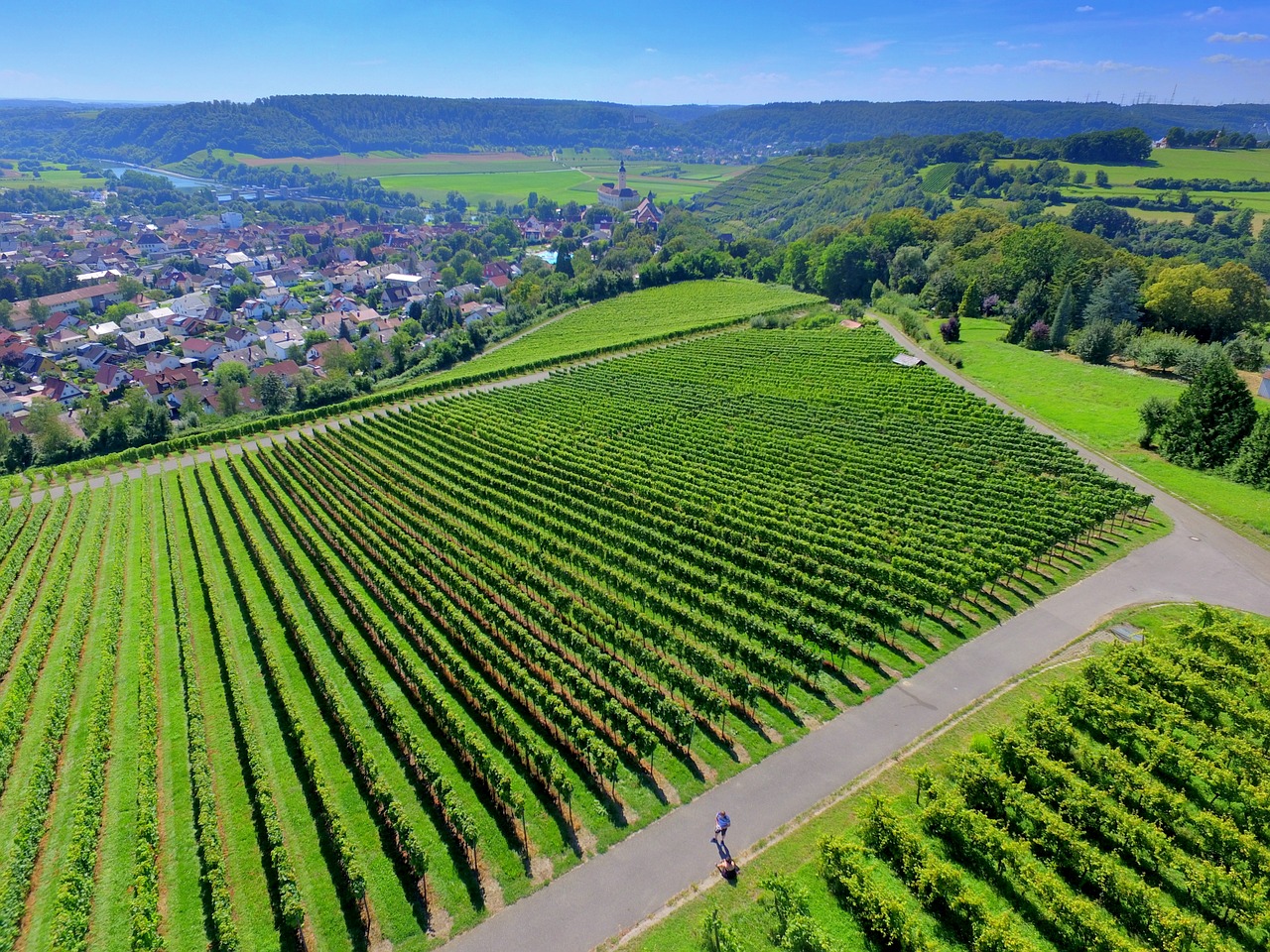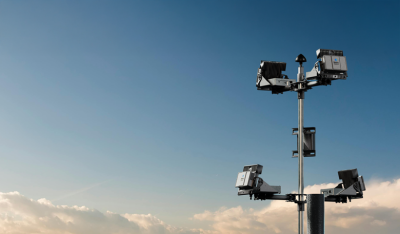 Now that many of the legal barriers to entry that existed for farmers in terms of how they wanted to utilize drones have for the most part been lifted under Part 107, the questions and concerns at the top of mind for many growers are around the logistics of what it means to properly utilize these tools. What data is being gathered? How is it going to impact decisions? Are they able to trust that data?All of these questions are ones that are being worked through by many different growers in many different areas, but the one thing they all have in common is a need to ensure the accuracy of airborne imaging measurements that are taken via a drone. A patent that has just been issued to SLANTRANGE covering foundational technologies for aerial crop inspection and measurement is designed to do just that.Patent 9,470,579, issued by the U.S. Patent and Trademark Office, creates a new approach to generating accurate information from drone-based sensors. These new systems will be critical to farmers, as their ability to alert growers to areas of nutrient deficiency or pest infestation for earlier and more precise treatment will enable them to prevent major losses. They will also enable the optimization of management practices and allow more accurate insurance and yield forecasting tools, and it’s impossible to overstate how import such things are.“Farmers and agronomists rely on accurate information to support their important management decisions,” said Matthew Barre, Director of Strategic Development at SLANTRANGE. “Because airborne crop measurement systems rely on sunlight interaction with the crop canopy, measurements will change if sunlight conditions change and are not properly corrected. As a result, users of uncalibrated cameras and sensors may interpret data as stressed vegetation conditions in their crops which in reality is no more than artifacts of changing lighting conditions.”Additionally, growers and agronomists rely upon accurate information in the cases Barre mentioned, but any downstream business models which utilize this info will similarly need it to be accurate. Data models that draw on sources with large, unknown errors will be invalid as well, all of which will create significant issues for any grower trying to figure out how drone technology is going to work for them.This news presents growers with a unique opportunity that will help them leverage drones in a way that will make a positive impact on their bottom line. With regulatory concerns now mostly mitigated, being able to get specific about how drones will have an impact on ROI is something that growers of all types and sizes will need to understand. Learn more about this announcement along with some other exciting news, updates and insights that SLANTRANGE will be talking through at booth 609 during the Commercial UAV Expo.
Now that many of the legal barriers to entry that existed for farmers in terms of how they wanted to utilize drones have for the most part been lifted under Part 107, the questions and concerns at the top of mind for many growers are around the logistics of what it means to properly utilize these tools. What data is being gathered? How is it going to impact decisions? Are they able to trust that data?All of these questions are ones that are being worked through by many different growers in many different areas, but the one thing they all have in common is a need to ensure the accuracy of airborne imaging measurements that are taken via a drone. A patent that has just been issued to SLANTRANGE covering foundational technologies for aerial crop inspection and measurement is designed to do just that.Patent 9,470,579, issued by the U.S. Patent and Trademark Office, creates a new approach to generating accurate information from drone-based sensors. These new systems will be critical to farmers, as their ability to alert growers to areas of nutrient deficiency or pest infestation for earlier and more precise treatment will enable them to prevent major losses. They will also enable the optimization of management practices and allow more accurate insurance and yield forecasting tools, and it’s impossible to overstate how import such things are.“Farmers and agronomists rely on accurate information to support their important management decisions,” said Matthew Barre, Director of Strategic Development at SLANTRANGE. “Because airborne crop measurement systems rely on sunlight interaction with the crop canopy, measurements will change if sunlight conditions change and are not properly corrected. As a result, users of uncalibrated cameras and sensors may interpret data as stressed vegetation conditions in their crops which in reality is no more than artifacts of changing lighting conditions.”Additionally, growers and agronomists rely upon accurate information in the cases Barre mentioned, but any downstream business models which utilize this info will similarly need it to be accurate. Data models that draw on sources with large, unknown errors will be invalid as well, all of which will create significant issues for any grower trying to figure out how drone technology is going to work for them.This news presents growers with a unique opportunity that will help them leverage drones in a way that will make a positive impact on their bottom line. With regulatory concerns now mostly mitigated, being able to get specific about how drones will have an impact on ROI is something that growers of all types and sizes will need to understand. Learn more about this announcement along with some other exciting news, updates and insights that SLANTRANGE will be talking through at booth 609 during the Commercial UAV Expo. October 26, 2016
SLANTRANGE Ensures the Accuracy of Airborne Imaging Measurements with Agricultural Drones

 Now that many of the legal barriers to entry that existed for farmers in terms of how they wanted to utilize drones have for the most part been lifted under Part 107, the questions and concerns at the top of mind for many growers are around the logistics of what it means to properly utilize these tools. What data is being gathered? How is it going to impact decisions? Are they able to trust that data?All of these questions are ones that are being worked through by many different growers in many different areas, but the one thing they all have in common is a need to ensure the accuracy of airborne imaging measurements that are taken via a drone. A patent that has just been issued to SLANTRANGE covering foundational technologies for aerial crop inspection and measurement is designed to do just that.Patent 9,470,579, issued by the U.S. Patent and Trademark Office, creates a new approach to generating accurate information from drone-based sensors. These new systems will be critical to farmers, as their ability to alert growers to areas of nutrient deficiency or pest infestation for earlier and more precise treatment will enable them to prevent major losses. They will also enable the optimization of management practices and allow more accurate insurance and yield forecasting tools, and it’s impossible to overstate how import such things are.“Farmers and agronomists rely on accurate information to support their important management decisions,” said Matthew Barre, Director of Strategic Development at SLANTRANGE. “Because airborne crop measurement systems rely on sunlight interaction with the crop canopy, measurements will change if sunlight conditions change and are not properly corrected. As a result, users of uncalibrated cameras and sensors may interpret data as stressed vegetation conditions in their crops which in reality is no more than artifacts of changing lighting conditions.”Additionally, growers and agronomists rely upon accurate information in the cases Barre mentioned, but any downstream business models which utilize this info will similarly need it to be accurate. Data models that draw on sources with large, unknown errors will be invalid as well, all of which will create significant issues for any grower trying to figure out how drone technology is going to work for them.This news presents growers with a unique opportunity that will help them leverage drones in a way that will make a positive impact on their bottom line. With regulatory concerns now mostly mitigated, being able to get specific about how drones will have an impact on ROI is something that growers of all types and sizes will need to understand. Learn more about this announcement along with some other exciting news, updates and insights that SLANTRANGE will be talking through at booth 609 during the Commercial UAV Expo.
Now that many of the legal barriers to entry that existed for farmers in terms of how they wanted to utilize drones have for the most part been lifted under Part 107, the questions and concerns at the top of mind for many growers are around the logistics of what it means to properly utilize these tools. What data is being gathered? How is it going to impact decisions? Are they able to trust that data?All of these questions are ones that are being worked through by many different growers in many different areas, but the one thing they all have in common is a need to ensure the accuracy of airborne imaging measurements that are taken via a drone. A patent that has just been issued to SLANTRANGE covering foundational technologies for aerial crop inspection and measurement is designed to do just that.Patent 9,470,579, issued by the U.S. Patent and Trademark Office, creates a new approach to generating accurate information from drone-based sensors. These new systems will be critical to farmers, as their ability to alert growers to areas of nutrient deficiency or pest infestation for earlier and more precise treatment will enable them to prevent major losses. They will also enable the optimization of management practices and allow more accurate insurance and yield forecasting tools, and it’s impossible to overstate how import such things are.“Farmers and agronomists rely on accurate information to support their important management decisions,” said Matthew Barre, Director of Strategic Development at SLANTRANGE. “Because airborne crop measurement systems rely on sunlight interaction with the crop canopy, measurements will change if sunlight conditions change and are not properly corrected. As a result, users of uncalibrated cameras and sensors may interpret data as stressed vegetation conditions in their crops which in reality is no more than artifacts of changing lighting conditions.”Additionally, growers and agronomists rely upon accurate information in the cases Barre mentioned, but any downstream business models which utilize this info will similarly need it to be accurate. Data models that draw on sources with large, unknown errors will be invalid as well, all of which will create significant issues for any grower trying to figure out how drone technology is going to work for them.This news presents growers with a unique opportunity that will help them leverage drones in a way that will make a positive impact on their bottom line. With regulatory concerns now mostly mitigated, being able to get specific about how drones will have an impact on ROI is something that growers of all types and sizes will need to understand. Learn more about this announcement along with some other exciting news, updates and insights that SLANTRANGE will be talking through at booth 609 during the Commercial UAV Expo. 


 - C.jpg.small.400x400.jpg)










Comments